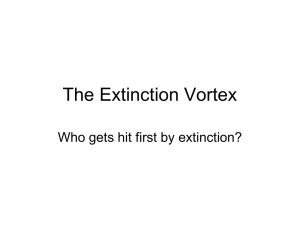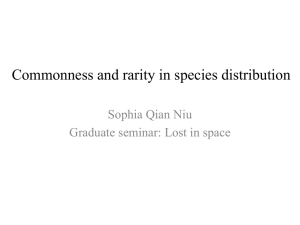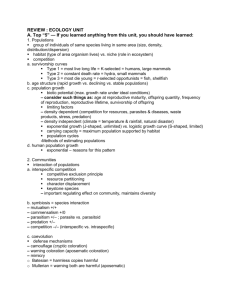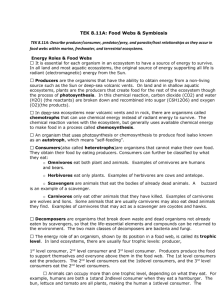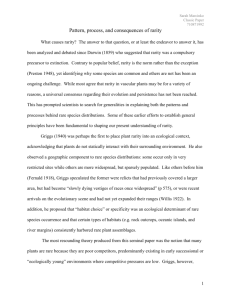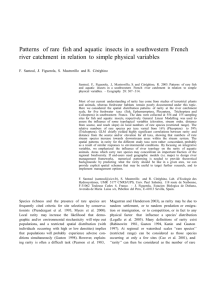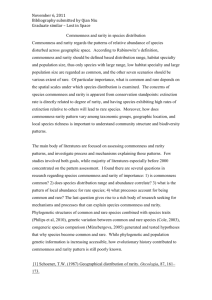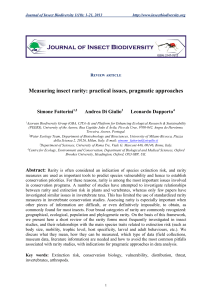Knowledge Building RAD Results
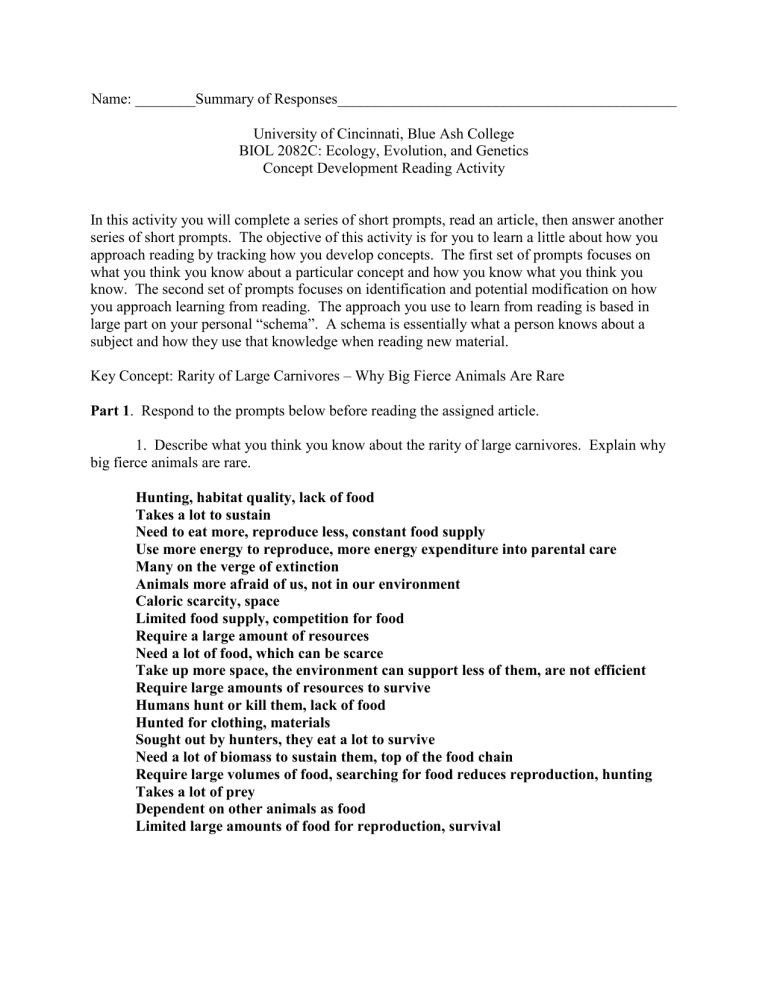
Name: ________Summary of Responses_____________________________________________
University of Cincinnati, Blue Ash College
BIOL 2082C: Ecology, Evolution, and Genetics
Concept Development Reading Activity
In this activity you will complete a series of short prompts, read an article, then answer another series of short prompts. The objective of this activity is for you to learn a little about how you approach reading by tracking how you develop concepts. The first set of prompts focuses on what you think you know about a particular concept and how you know what you think you know. The second set of prompts focuses on identification and potential modification on how you approach learning from reading. The approach you use to learn from reading is based in large part on your personal “schema”. A schema is essentially what a person knows about a subject and how they use that knowledge when reading new material.
Key Concept: Rarity of Large Carnivores – Why Big Fierce Animals Are Rare
Part 1 . Respond to the prompts below before reading the assigned article.
1. Describe what you think you know about the rarity of large carnivores. Explain why big fierce animals are rare.
Hunting, habitat quality, lack of food
Takes a lot to sustain
Need to eat more, reproduce less, constant food supply
Use more energy to reproduce, more energy expenditure into parental care
Many on the verge of extinction
Animals more afraid of us, not in our environment
Caloric scarcity, space
Limited food supply, competition for food
Require a large amount of resources
Need a lot of food, which can be scarce
Take up more space, the environment can support less of them, are not efficient
Require large amounts of resources to survive
Humans hunt or kill them, lack of food
Hunted for clothing, materials
Sought out by hunters, they eat a lot to survive
Need a lot of biomass to sustain them, top of the food chain
Require large volumes of food, searching for food reduces reproduction, hunting
Takes a lot of prey
Dependent on other animals as food
Limited large amounts of food for reproduction, survival
2. Describe how you know what you think you know about the rarity of large carnivores.
That is, describe your knowledge schema about why big fierce animals are rare.
No answer (hunting and lack of mates)
Animals adapt and grow according to limitations of the environment
Animal planet and am very interested
Lectures and observations
Habitat destruction, poaching, scarcity of prey
School, parents, Animal Planet
Observation (more predators = more prey needed)
Previous classes, reading, and visits to zoo
Books, magazines, etc.
Previous courses and texts
Common sense
There are not large numbers of bears in forests
No answer (according to my knowledge)
Elephants are big and fierce
News, documentaries
Previous biology courses
I never see them, no evidence to prove that they are not rare
Reading, documentaries, personal experience
Articles, internet
Biology class in high school
Part 2 . Read the article “Why Big Fierce Animals Are Rare” by Paul Colinvaux.
Part 3 . Respond to the prompts below after reading the assigned article.
3. Describe what you know now about the rarity of large carnivores. Explain why big fierce animals are rare.
Lack of caloric availability, limited biomass available on Earth
Energy supply of the Earth is not enough
Prey size must be able to fit in mouth
Big animals at the top of the food chain, need to eat more food to get energy
The availability of energy is reduced up the food chain
Energy supply available from the sun
Supply of energy required is high
Second Law of Thermodynamics, energy lost up the food chain
Second Law of Thermodynamics, energy lost up food chain
Size limited by Second Law of Thermodynamics
Large animals take up more biomass and get less energy, trophic cascades
Lots of biomass to sustain them, available energy is reduced upward in food chain
3. Describe what you know now about the rarity of large carnivores. Explain why big fierce animals are rare. (Cont.)
Second Law of Thermodynamics, less energy available at the end, energy lost
Not enough energy in the food
Only get a small percent of energy that starts at the bottom of the food chain
They are at the top of the food pyramid
Only consume a fraction of the food below them and they use big amounts of energy
Require more calories to survive, organisms at bottom of food chain have more energy
Heat and energy lost at every step up the food chain
Second Law of Thermodynamics, energy lost at every transfer
4. Describe what you read in the article that influenced your knowledge about the rarity of large carnivores.
5. Describe how you might apply what you now know about the rarity of large carnivores (why big fierce animals are rare) in future readings in ecology, future readings in other sciences, and in future readings in popular press.
Reading ecology articles about environment/habitat
Understand large predators, understand how easy it is for large animals to go extinct
Dragons didn’t evolve because there is not enough energy for them
Assess the data being read, useful in array of subjects
Rarity not due to humans, media exploits the fact; although humans do impact
Think about energy availability and life history trade-offs
Increased understanding of why large carnivores are few, energy is limited
Science overlap in concepts, better assess popular press articles
Each jump up the pyramid is completely dependent on the lower level
Be able to follow different populations of predator and prey
In popular press will be easy to understand why certain animals are going extinct
Explains why certain animals are going extinct
Discussing the real reason they are going extinct, encourage other to protect them
I can use the information I have to refute incorrect information
Find new sources of energy for the animals, apply to medicine
The bigger the animal the more energy it needs
Break down and analyze why something happens and see if it adds up, always another explanation for everything
I can recognize why big animals are how food chains work
Helps me understand why there is a decline in different animals like large carnivores
Easier to understand food chains/webs; decline is due to difference in size


